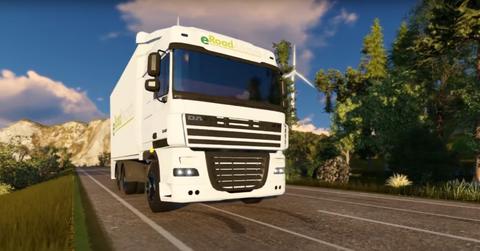These Roads In Sweden Can Charge Electric Cars
A 1.2-mile stretch of highway near Stockholm’s Arlanda Airport will be able to charge electric cars and trucks as they drive on it because of a special strip embedded in the road.
Updated May 20 2019, 5:59 p.m. ET

As electric vehicles (EVs) become more and more common on the road, the basic problem of how to charge them reappears. For EVs to be truly practical, they need to have accessible charging options. That's why range anxiety is still a real concern and many EVs are confined to major cities, where electric charging stations are usually available. While electric cars are often ideal for city dwellers, the bigger environmental concerns are often out on the highways were vehicles traveling long distances can cause a significant amount of CO2 emissions.
As a result, plug-in charging stations are already being replaced by stations that can charge electric vehicles wirelessly. For example, Momentum Dynamics Corporation is already working on wireless charging systems for fleets of electric buses in the United States.
In Sweden, the government is taking it a step further. The Swedish Transport Administration has unveiled a project called eRoadArlanda that will hopefully electrify all the highways in Sweden. They have teamed up with EV pros to create an initial stretch of road that powers electric cars and trucks as they drive along.
The electrified road is located near Stockholm and is about 1.2 miles long. The goal of the project is to test this electric technology so that range concerns can eventually be eliminated. Sweden is personally invested in this game changing system because they aim to have a fossil fuel free transportation infrastructure by 2030.
So, how does this special road work? The electrified road implements conductive technology which allows electricity to run through a contact point below the car. To reach the contact point, the vehicle’s movable arm “searches” for the rail once it is above the designated electric section of the road. Once the rail is detected, the arm connects to it and energy flows to the vehicle.
The rail itself works automatically and is linked to a power grid. The current keeps charging as long as the vehicle is moving and doesn’t change lanes. This smart system can even tell when a vehicle is topped out on energy, since it measures how much power is given out.
The system was designed so animals and people would not get shocked when they come in contact with the road. The chief executive of the eRoadArlanda project, Hans Säll explained to The Guardian, “There is no electricity on the surface. There are two tracks, just like an outlet in the wall. Five or six centimetres down is where the electricity is. But if you flood the road with salt water then we have found that the electricity level at the surface is just one volt. You could walk on it barefoot.”
This kind of charge as-you-go design comes with plenty of benefits. Unlike overhead wiring systems, all types of vehicle including cars, trucks, and buses can be charged on this system because there is a short distance between the vehicles and the conductive feed. This rail system also won’t need a jungle of overhead cables which can obstruct the view or limit access for extra large trucks.
It’s also easy to retrofit existing battery powered vehicles, which make the logistics of transitioning to this system not only painless, but also cheap. Future car designs can also be smaller, which will reduce overall costs associated with manufacturing.
Sweden’s financial investment in electrifying the roads is expected to pay off, since it will help reduce overall costs, as electricity is generally lower than fuel. Existing infrastructure can be used, and only two to four percent of the road network would need to be electrified in certain sections. According to the eRoadArlanda team, electric roads like these would also reduce fossil emissions by a staggering 80 to 90 percent.